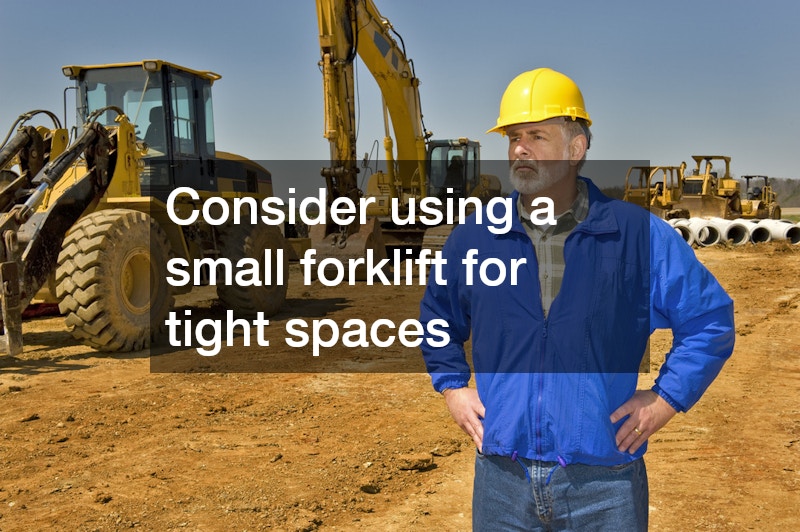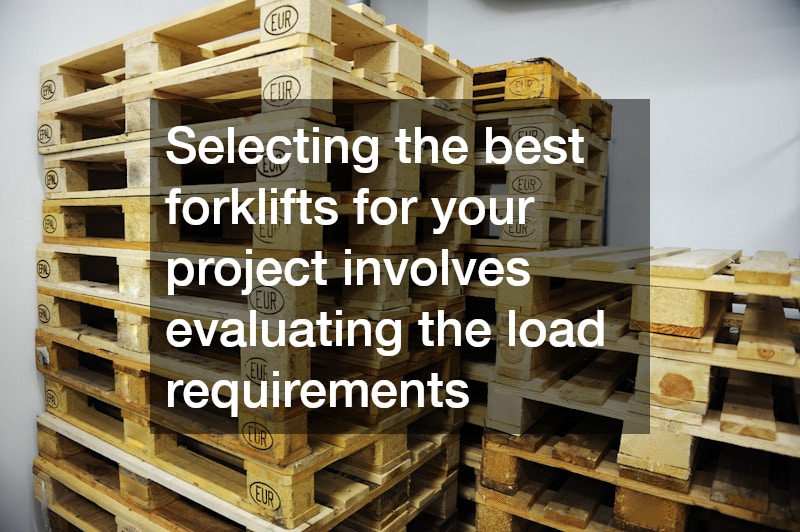

When planning a project that requires moving heavy materials, forklifts are essential tools. Whether you’re working in a warehouse or on a construction site, choosing the right type of equipment is crucial for efficiency and safety. Portable forklifts offer flexibility and convenience for smaller tasks. These compact models are easy to maneuver and ideal for tight or crowded workspaces.

Consider using a small forklift for tight spaces if you’re dealing with limited space. These forklifts are designed to handle confined areas where standard forklifts might struggle. They provide the power needed for lifting and moving while still being nimble enough to navigate narrow aisles. There are different truck type forklift designs available, from standard models to more specialized ones that cater to unique operational needs. Depending on your project, you can choose from heavy-duty and light-duty options matching your lifts’ weight and frequency.

Selecting the best forklifts for your project involves evaluating the load requirements, workspace constraints, and desired mobility. For short-term needs or specific tasks, forklift truck rental options offer a cost-effective solution without the commitment of buying. Renting allows you to access a variety of forklift types suited for different tasks, ensuring you have the right equipment for every job.
A forklift is a task that is understandably not for the faint-hearted but for an experienced fork truck operator. You can search for different types of forklifts with pictures online. Forklifts are heavy industry pieces of equipment, and they carry a load of weight that could reach 50 tons. From afar, a forklift in the air looks like it is moving effortlessly. To that end, a heavy role that is forklift requires heavy knowledge on forklifts. You wouldn’t want the company you work for to just purchase forklifts from a street forklift dealer, would you? You want a forklift dealer with credentials that confirm that you have the best forklifts in the business. Furthermore, are you aware of the forklift categories? Some forklifts are designed to carry a load of soil, while some are shaped to carry a big pile of rocks. Lack of knowledge about forklift categories could damage the forklifts, and that’s a call for extra maintenance expenses. Also, do you know the forklift description? This kind of knowledge could act as a manual book on handling the equipment. Here is what you need to know about forklifts if you are to be an effective fork lifter.
If you are new to operating a forklift and feel intimidated, it is okay! It is a big piece of equipment usually dealing with very heavy loads, one to five tons, in fact, with heavy duty forklifts benching up to 50 tons! But do not fret because that is what is was designed for. However, for you new forklift operators, it is good to be familiar with a few tips, even if you and common sense are best friends.
Before operating a forklift, obviously, you should check the fuel. Forklifts can be powered by electricity or a battery, gasoline or diesel and even propane. There is a gauge on the dashboard that is readily available to you. The same goes for the machine’s voltage levels. Are they standard? If not or you do not know, consult with an equipment specialists who can tell you what is what because they will have the equipment expertise needed. If neither step is taken, you can seriously hurt yourself and others around you. Out of all workplace injuries, you would be contributing to the 10 percent associated with forklifts in warehouses and factories.
Forklifts are designed with hydraulics. However, in order for hydraulics to function like normal, hydraulic oil is used. There is nothing worse than benching a 50 ton object only for the hydraulics to fail because of inadequate assessment or lack of hydraulic oil and adding to the 1 percent of accidents contributed with forklifts. Again, if you are unfamiliar on how to check the hydraulic oil, consult a specialist with the equipment expertise to check for you. Shutting down for forklift repair services only serves to keep you and your fellow workers safe.
While it is true forklifts can at least hit a maximum of eight miles per hour, you can still cause serious injury someone or worse. You should treat the forklift like you would a car. Would you drive 60 mile per hour while distracted with a phone call, too? No. Keep your eyes forward and hands on the wheel at all times. In fact, if you work close or in pedestrian heavy areas, you should not be zipping around eight miles an hour, instead, slow it down to three miles per hour. It is a win-win. You continue to secure your job, while making sure your boss does not have to deal with a lawsuit.



